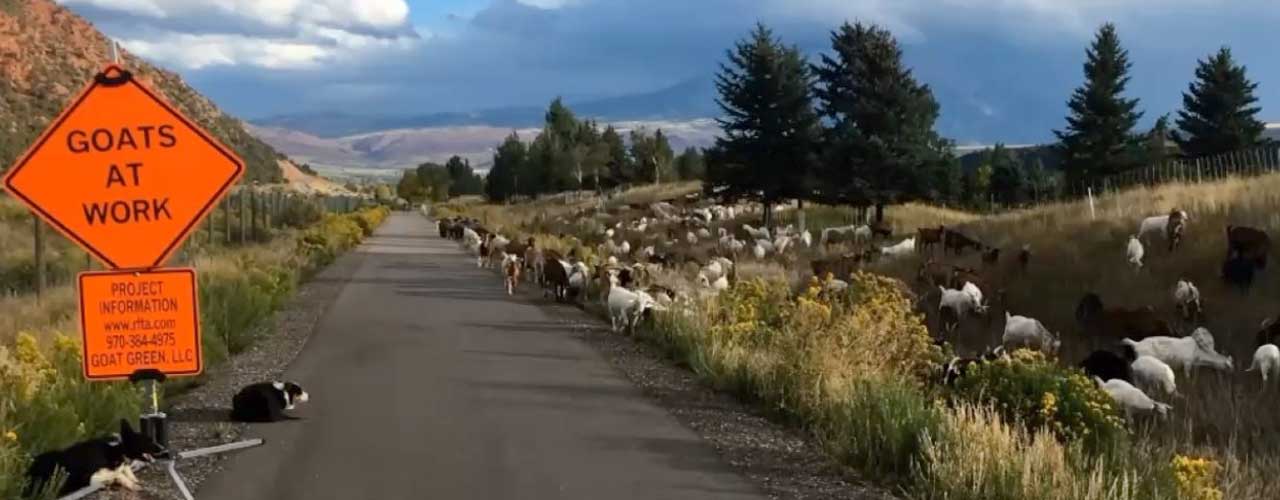Skilled Graziers: The Key to Wildfire Prevention
Grazing for wildfire prevention requires skilled herders.
At first glance, goat grazing may seem simple — just put goats in a field and let them eat. But effective wildfire prevention and ecological restoration require far more than turning animals loose.
Skilled graziers know how to:
- Target fuels: Guide goats toward dry brush, ladder fuels, and invasive plants that drive fire spread.
- Protect ecosystems: Safeguard desirable plants, soils, and waterways while improving long-term health.
- Time the work: Graze at the right season and intensity so fuel loads are reduced before fire season.
- Manage movement: Use fencing, dogs, and daily adjustments to keep herds where they’re needed most.
- Balance animal welfare: Keep goats healthy, productive, and effective throughout the project.
Goats provide the appetite, but skilled herders provide the precision. Without them, grazing is just random browsing — not wildfire prevention.
The Impact of Skilled Grazing
Well-managed herds can reduce fine fuels by 60–80%, significantly lowering the risk of fast-moving grass and brush fires. Projects in Colorado, California, and New Mexico show that when graziers plan rotations, monitor forage, and adjust pressure, landscapes become more resilient while soils and plant communities improve.
The Cost of Unskilled Grazing
When goats are left unmanaged, results can be disappointing—or even damaging. Overgrazing can lead to erosion and the spread of invasive plants spread. Animals may ignore the true fire hazards, leaving flammable vegetation untouched while stripping valuable native plants. Precision management is what transforms grazing into an effective fire-mitigation tool.
Training and Professional Standards
Targeted grazing for wildfire prevention is a specialized profession that draws on ecology, animal science, logistics, and public safety. Many graziers build their skills through targeted grazing workshops, wildfire prevention clinics, and certification programs. These standards give land managers confidence that contractors can deliver measurable, safe results.
Collaboration and Planning
Successful grazing projects don’t happen in isolation. Skilled graziers coordinate with landowners, fire districts, and resource agencies to create written plans that define:
- Grazing objectives and timing
- Monitoring and reporting requirements
- Contingency steps for weather or wildfire alerts
This teamwork ensures grazing aligns with broader fuel-reduction and restoration goals.
Take Action
- Landowners & Agencies: Hire trained professionals for grazing-based fire mitigation.
- Graziers: Invest in continuing education — clinics, mentoring, and certifications elevate your practice and create new opportunities.
- Communities: Advocate for skilled grazing as part of your wildfire-prevention toolkit.
Bottom line: Targeted grazing isn’t just putting goats on a hillside. It’s a precision craft that protects lives, property, and ecosystems when performed by skilled hands.

